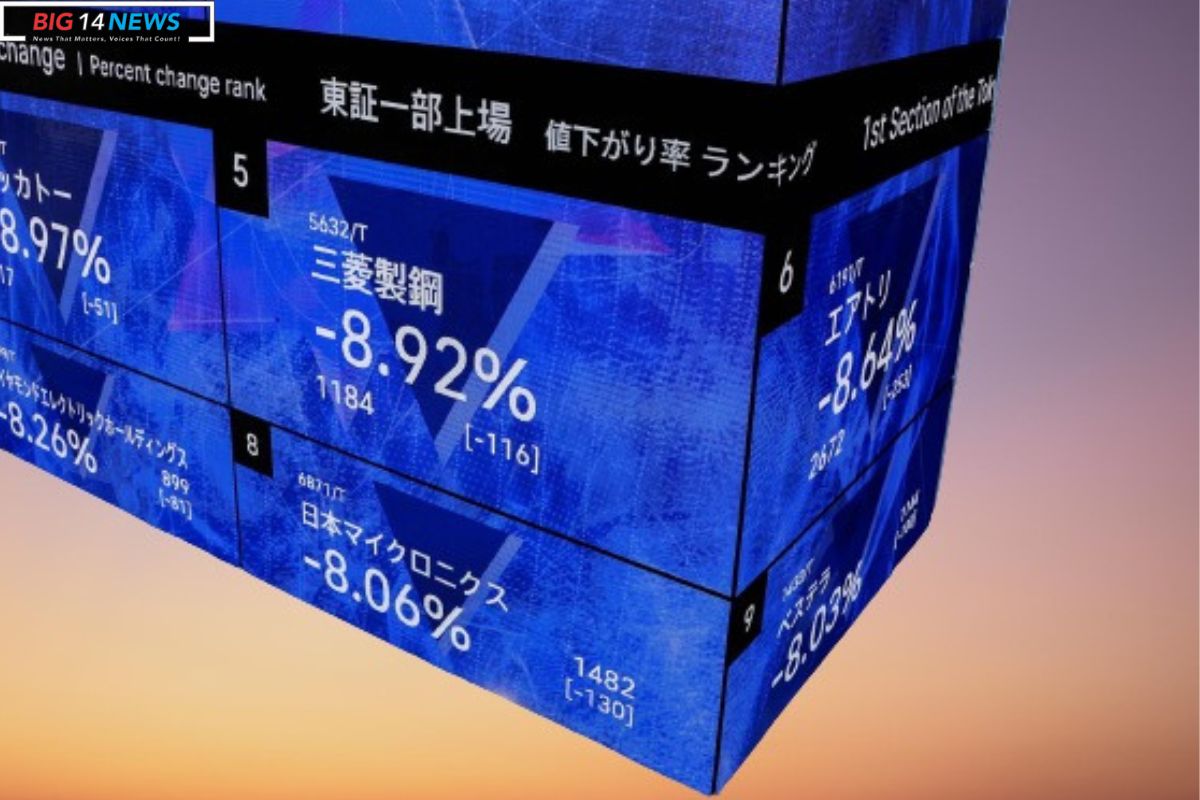Stocks Slide as US Yields Surge: Stocks dropped due to high U.S. yields nearing decade highs. Concerns about inflation arose due to rising oil prices, potentially leading the Federal Reserve to maintain high-interest rates for an extended period.
Despite a 1% drop in Brent oil prices in Asia, they remain 30% higher than three months ago. They stay above their 10-month highs. Saudi Arabia and Russia cutting production caused the rise.
Canada’s inflation rate rose due to increased energy costs. This strengthened the Canadian dollar and led to global bond market sell-offs.
The CPI in Britain, however, decreased, though it remained high at 6.7%. The pound dropped to $1.2334, its lowest in nearly four months, due to reduced core price increases.
The 10-year Treasury bill’s return rate of 4.371% was the highest since 2007. It was 4.14%. Simultaneously, the yield on a two-year Treasury bond neared a comparable milestone.
S&P 500 futures dropped 0.1%, FTSE futures fell 0.3%, and European futures were unchanged.
MSCI’s primary Asia-Pacific stock index, excluding Japan, fell 0.7%. China didn’t alter loan rates, hurting Hong Kong stocks.
The Nikkei dropped by 0.6%.
Now, all eyes are on the Federal Reserve. Interest rate futures indicate a low probability of rate increases. People are focused on economic predictions and Chair Jerome Powell‘s meeting.
Analysts predict minimal changes to the dot plot with no significant shifts expected. Powell will discuss how inflation changes impact interest rates.
This Fed meeting is the first of many central bank meetings in Sweden, Switzerland, Norway, Britain, and Japan this week.


ALSO READ: Israeli Tech Companies US Expansion: Israeli Tech Scene Expands Horizons in the US
Despite other foreign exchange markets stabilizing before the Fed meeting, the yen continues to decline due to expectations of higher U.S. and lower Japanese interest rates. One dollar was worth 147.85 yen then.
10-year Japanese government bonds remain at 0.72%, nearing the Bank of Japan’s 1% price cap.
The euro remained at $1.0684, and commodity-exporting countries maintained their strong currencies. Following high dairy prices at a recent sale, the New Zealand dollar made slight gains, selling at $0.5940.
The AUD remained at $0.6454, possibly influenced by dovish remarks from U.S. leaders.
The price of gold, $1,929 per ounce, increased due to higher profits. Dry weather in Australia and Argentina was expected to reduce wheat production, keeping wheat prices stable. This compensated for previous price drops due to large shipments from Russia.
Our Reader’s Queries
Why do stocks fall when Treasury yields rise?
As interest rates increase, stocks’ future profits are valued less. The climb in Treasury yields is also reducing the appeal of risky investments. Returns on fixed income assets are surpassing the earnings of S&P 500 index companies by a growing margin.
Why are US stocks surging?
On Wednesday, US stocks soared while benchmark Treasury yields dropped to their lowest point since August. This came after the Federal Reserve indicated the end of its tightening cycle and projected a cautious tone for the upcoming year.
Why are bond yields surging?
Bill Merz, head of capital markets research at U.S. Bank Wealth Management, points to three main factors that caused the surge in bond yields. These include the Federal Reserve’s reaction to inflation, the robustness of the U.S. economy, and the growing influx of U.S. Treasury securities entering the market.
Why do rising yields hurt stocks?
Haworth explains that when interest rates rise, stock investors are less eager to drive up stock prices because the potential future earnings seem less appealing compared to the higher yields offered by bonds.

